 At Dawgen Global, we recognize that cybersecurity is no longer a technical issue—it’s a core element of organizational resilience and risk management. To guide organizations on this critical journey, the National Institute of Standards and Technology (NIST) has provided an indispensable resource: the NIST Cybersecurity Framework (CSF). Developed in response to Executive Order 13636, this voluntary framework offers a structured, flexible, and highly respected approach to cybersecurity risk management across industries.
At Dawgen Global, we recognize that cybersecurity is no longer a technical issue—it’s a core element of organizational resilience and risk management. To guide organizations on this critical journey, the National Institute of Standards and Technology (NIST) has provided an indispensable resource: the NIST Cybersecurity Framework (CSF). Developed in response to Executive Order 13636, this voluntary framework offers a structured, flexible, and highly respected approach to cybersecurity risk management across industries.
Understanding the NIST Cybersecurity Framework
The NIST CSF is the product of collaboration between government, industry, and academia. It emphasizes risk-based strategies and practical action plans, enabling organizations to systematically strengthen their cyber defenses while tailoring solutions to unique operational needs.
Unlike prescriptive regulations, the Framework fosters agility, scalability, and resilience—a critical trifecta in today’s volatile cyber landscape.
Key Components of the Framework
1. Core Functions: Building Blocks of Cybersecurity
The Framework identifies five core functions, each representing a high-level cybersecurity activity:
-
Identify
Develop an understanding of organizational assets, systems, data, and risks to manage cybersecurity efforts effectively. -
Protect
Implement safeguards to limit or contain the impact of potential cybersecurity events. -
Detect
Develop and implement systems to promptly discover cybersecurity incidents. -
Respond
Take appropriate actions regarding a detected cybersecurity incident to minimize its impact. -
Recover
Restore capabilities or services impaired due to cybersecurity incidents and incorporate lessons learned into future operations.
Together, these functions form a holistic view of the cybersecurity lifecycle—from prevention to recovery.
2. Categories and Subcategories: A Detailed Roadmap
Each function is subdivided into categories and subcategories, offering granular guidance and specific outcomes. For instance, under “Protect,” categories such as “Access Control” and “Awareness and Training” define precise action areas, supported by tailored subcategories and references to industry standards like ISO/IEC 27001 and COBIT.
This design ensures organizations can scale their cybersecurity programs based on maturity, resources, and sector-specific needs.
3. Implementation Tiers: Measuring Cyber Maturity
The Framework defines four Implementation Tiers, describing the integration of cybersecurity practices with organizational objectives:
-
Tier 1: Partial
Risk management practices are ad hoc and not integrated organization-wide. -
Tier 2: Risk Informed
Risk management practices are approved but not established organization-wide. -
Tier 3: Repeatable
Risk management practices are formally approved, implemented as policies, and periodically reviewed. -
Tier 4: Adaptive
Organizations adapt cybersecurity practices dynamically based on lessons learned and predictive indicators.
These tiers help organizations understand their cybersecurity posture relative to their goals and risk appetite.
4. Framework Profiles: Customizing Cyber Strategies
A Profile represents the alignment of the organization’s cybersecurity activities with the business requirements, risk tolerance, and resources.
Organizations can create:
-
Current Profiles to reflect their existing practices
-
Target Profiles to set cybersecurity improvement goals
The gap analysis between these profiles drives continuous improvement planning.
Utilizing the Framework: Practical Applications
The NIST CSF empowers organizations to:
-
Diagnose and Benchmark their current cybersecurity practices
-
Prioritize and Mitigate Risks based on business needs and potential impact
-
Communicate Clearly internally and externally about cybersecurity posture and goals
-
Develop a Roadmap to elevate cybersecurity maturity systematically
-
Embed Cybersecurity into Business Strategy to enhance resilience and trust
Broad Adoption and Recognition
The Framework’s versatility has made it the de facto standard across multiple sectors—finance, energy, healthcare, manufacturing, and government. Its adoption has been bolstered by its:
-
Cross-sector relevance
-
Technology-neutral approach
-
Alignment with existing standards and best practices
Moreover, many global cybersecurity guidelines and regulatory frameworks draw heavily from the NIST CSF, underscoring its universal acceptance.
Continual Enhancement: Evolving to Meet Emerging Threats
One of the most powerful strengths of the NIST Cybersecurity Framework lies in its commitment to continual enhancement. Cybersecurity is not static—new threats, technologies, and vulnerabilities emerge constantly. Recognizing this ever-changing landscape, NIST proactively evolves the Framework to ensure it remains relevant, practical, and forward-looking.
1. Incorporating Community Insights
NIST places immense value on collaboration with a broad range of stakeholders—including private industry, government agencies, academia, and international organizations. Through regular workshops, public comment periods, and direct engagement with cybersecurity practitioners, NIST gathers real-world experiences, challenges, and success stories.
These community insights enable the Framework to reflect the realities of operational environments and ensure that guidance remains grounded, actionable, and effective across diverse sectors.
2. Integrating Technological Advancements
Technology innovation drives both opportunity and risk. As fields like cloud computing, artificial intelligence (AI), Internet of Things (IoT), quantum computing, and blockchain evolve, so too do the associated cybersecurity risks.
NIST actively monitors these developments, adapting the Framework to address new attack surfaces, novel threat vectors, and innovative defense mechanisms. By doing so, the Framework ensures that organizations can leverage emerging technologies securely and confidently.
3. Learning from Cybersecurity Incidents
The cybersecurity landscape offers a wealth of lessons from breaches, ransomware attacks, insider threats, and systemic vulnerabilities. Each major incident provides valuable information about what works—and what doesn’t—in defending critical systems.
NIST systematically integrates these lessons into the Framework updates, strengthening risk mitigation strategies, improving response and recovery processes, and highlighting common pitfalls organizations must avoid.
4. Preparing for the Future
With initiatives like the upcoming NIST Cybersecurity Framework 2.0, NIST is expanding the Framework’s scope to:
-
Address supply chain risks more explicitly
-
Enhance guidance for small and medium-sized businesses (SMBs)
-
Improve international harmonization
-
Foster integration with enterprise risk management practices
The goal is not just to keep pace with cyber threats, but to anticipate and shape the future of cybersecurity governance, resilience, and leadership.
Conclusion: Structured, Strategic, and Future-Proof
The NIST Cybersecurity Framework is not simply a static guidebook—it is a living, evolving resource that empowers organizations to navigate today’s cybersecurity challenges while preparing for tomorrow’s unknowns. It provides a structured, scalable path toward resilience, adaptable across industries, organizational sizes, and threat environments.
Whether an organization is:
-
Laying the foundation for a cybersecurity program,
-
Scaling existing defenses to a more mature, risk-informed model, or
-
Seeking to align cybersecurity with broader business strategy,
the Framework offers an indispensable blueprint for sustainable cyber resilience.
At Dawgen Global, we partner with organizations to not just implement cybersecurity frameworks, but to embed cybersecurity into the very fabric of business operations. Guided by globally recognized standards like NIST, we help you navigate complexity, mitigate risk, and build trust in a digital world.
Embrace the NIST Cybersecurity Framework today—and secure your tomorrow.
Next Step!
“Embrace BIG FIRM capabilities without the big firm price at Dawgen Global, your committed partner in carving a pathway to continual progress in the vibrant Caribbean region. Our integrated, multidisciplinary approach is finely tuned to address the unique intricacies and lucrative prospects that the region has to offer. Offering a rich array of services, including audit, accounting, tax, IT, HR, risk management, and more, we facilitate smarter and more effective decisions that set the stage for unprecedented triumphs. Let’s collaborate and craft a future where every decision is a steppingstone to greater success. Reach out to explore a partnership that promises not just growth but a future beaming with opportunities and achievements.
✉️ Email: [email protected] 🌐 Visit: Dawgen Global Website
📞 Caribbean Office: +1876-6655926 / 876-9293670/876-9265210 📲 WhatsApp Global: +1 876 5544445
📞 USA Office: 855-354-2447
Join hands with Dawgen Global. Together, let’s venture into a future brimming with opportunities and achievements

